Each subsequent week of the college football season has provided more and more entertainment, so of course Week 4 was the best week yet.
Five top-25 teams lost, four to lower ranked or unranked opponents. During the course of an hour Saturday afternoon, Clemson, Texas A&M and Iowa State were all upset.
BYU won again, making history in the process, Utah earned a bounce-back win over Washington State and Utah State came back down to earth with a loss to Boise State.
It was an eventful few days, to say the least.
Here are six takeaways from the weekend.
An absolute tragedy on the hill
There was plenty to take away from Utah’s comeback win over Washington State, both good and bad, but it all feels completely hollow following the tragic death of defensive back Aaron Lowe.
Lowe was shot and killed early Sunday morning during a house party in Sugar House, a simply devastating turn of events.
“Our thoughts and prayers are with Aaron’s family and friends, along with the other individual who was harmed in this tragic incident,” Utah coach Kyle Whittingham said. “Aaron was a great teammate, friend, brother and son and was loved by anyone who crossed paths with him. He will be deeply missed.”
Lowe’s loss, in the wake of the equally devastating death of running back Ty Jordan last Christmas, is an indescribable blow to an already hurting Utah program. Lowe was loved as a brother by his Utes teammates, as was Jordan — the pair were the closest of friends — and their deaths take precedence over anything that might happen on the field in future weeks.
“We are devastated by the loss of Aaron Lowe,” Utah athletic director Mark Harlan said. “... Aaron was a terrific young man, a leader on our football team, and a rock of resiliency and courage. Our prayers are with Aaron’s family, friends, teammates and all who knew and loved him. ... We have been in communication with Aaron’s family and we are providing support to them, as well as to the student-athletes, coaches and staff in all of our athletics programs, and our focus will remain on them.”
Undefeated is undefeated, but ...
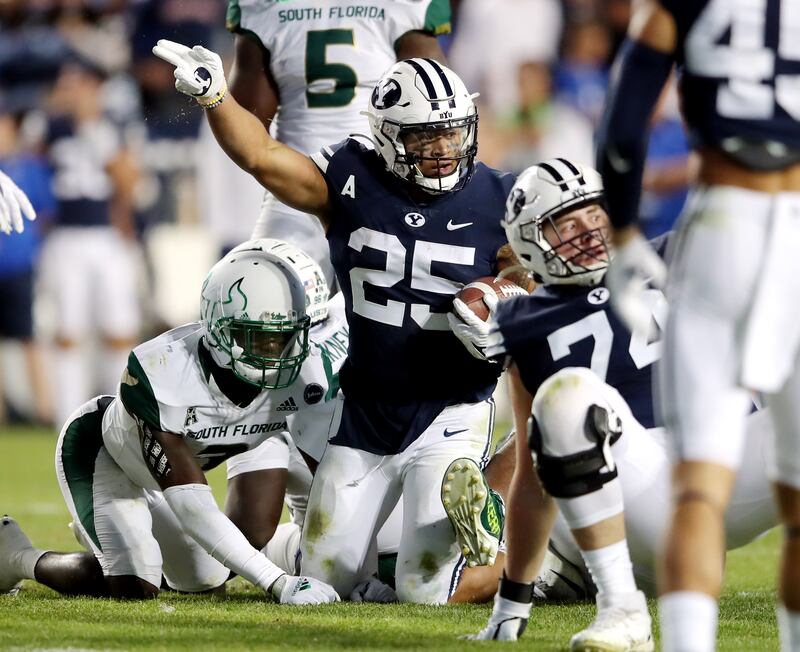
BYU is 4-0 for the second consecutive season. The Cougars have won 20 of their last 23 games and are ranked No. 13 in the country.
To say that things are great in Provo right now, after wins over Arizona, Utah, ASU and USF, would be an understatement.
Under Kalani Sitake, the Cougars have improved enough over the years to have been invited to join the Big 12, to have a chance to break into a New Year’s Six bowl and be described by ESPN’s Lee Corso on “College GameDay” as the best team outside of the Power Five.
Things are great in Provo. And yet, they could be better.
The win over USF left a lot to be desired. The Bulls came into the game considered one of the worst teams in the country, and for about a quarter BYU did what good teams are supposed to do against inferior competition, i.e. dominate.
After that, though, BYU played to the level of its opponent. Worse, the Cougars were outplayed for significant portions of the game.
It was a poor enough performance to concern Sitake, who expressed disappointment postgame.
“We were hoping to show better than we did tonight,” he said. “... It’s pretty evident that the defense has to get off the field (faster). ... I know we can play a lot better, especially on defense.”
A win is a win and the Cougars notched another one, and yes, the team was without some significant players on defense, but if BYU truly has designs on having a great season it has to be better and learn to put teams away, rather than just wait for the clock to wind down. It is as simple as that.
There is no such thing as a moral victory. Right?
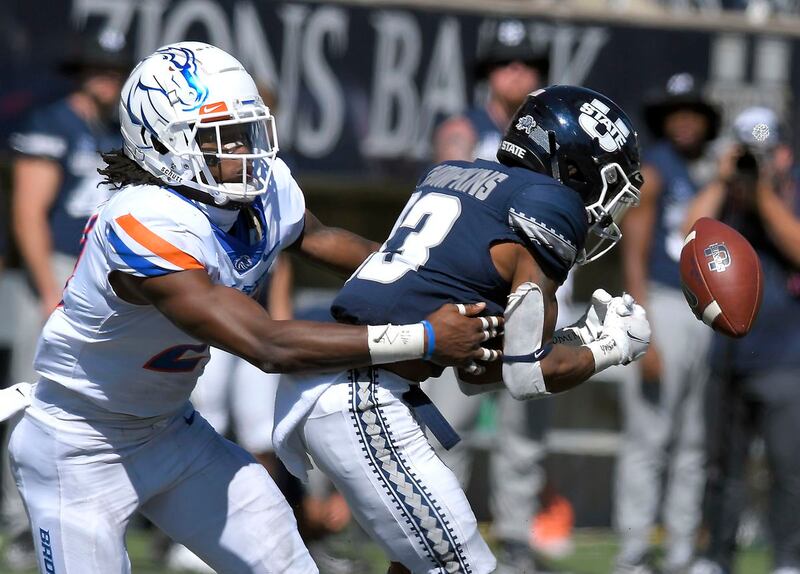
Utah State lost to Boise State on Saturday and it wasn’t close. Let’s get that out of the way.
The 27-3 defeat was not encouraging for a team that was 3-0 entering the game and boasted one of the more dynamic offenses in the country, statistically at least.
“Obviously disappointed in the way we played,” Utah State head coach Blake Anderson said. “I thought the energy level was good, but the execution was poor. Offense was as bad as we’ve executed since the beginning of the season. We had yards, but couldn’t finish in the red zone. Just seemed like we had every little off-schedule issue — false starts, busts up front, a couple of drops. We couldn’t maintain a rhythm whenever we got any at all.”
And yet, for all those mistakes, there were positives that could be taken away from the lopsided loss.
Anyone who has followed the Aggies in recent seasons knows that Boise State has utterly dominated Utah State. Last season, BSU won 42-13, and quite frankly the final score undersells how dominant the Broncos were. The year prior to that, Boise won 56-21. The game was over by the end of the first quarter, even with Jordan Love under center.
Even in 2018, the magical season that it was, Boise State got the better of Utah State 33-24, and in 2017 the Aggies lost 41-14 and in 2016 they lost 21-10.
A common theme after every Utah State loss was that Boise State was just better. More physical and more talented. Following Saturday’s loss, though, Aggie players fought back at that notion.
“I thought they weren’t the most physical team on the field today, or even the most talented team,” linebacker AJ Vongphachanh said. “I think my guys were there step-by-step. There was just a lack of execution by us on defense, I include myself.”
Running back Calvin Tyler felt similarly, noting, “This wasn’t the hardest defense we’ve played. We just didn’t execute like we needed to. I don’t think they did nothing special.”
If both are to be believed, the Aggies are a better team than they’ve been in the past. So moral victory?
Thank heaven for ’07 (and possibly now ’21)
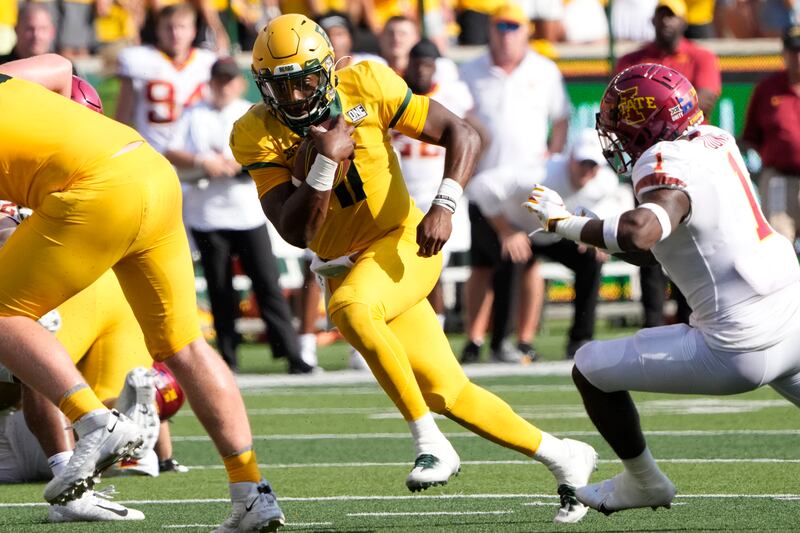
Set aside personal fandom for a moment. What was the most exciting college football season of the last 20 years? The most competitive, the most unpredictable, the most unusual?
Most would say 2007. That year, LSU won the national title with two losses. Only two teams in the final AP top 25 had one loss — Kansas and Hawaii. No FBS program went undefeated and the great powers were not at the top of the sport.
The top 10 teams that year were: No. 1 LSU, No. 2 Georgia, No. 3 USC, No. 4 Missouri, No. 5 Ohio State, No. 6 West Virginia, No. 7 Kansas, No. 8 Oklahoma, No. 9 Virginia Tech and No. 10 Boston College.
There hasn’t been a year like 2007 since. Some of that was by design. The creation of the College Football Playoff and use of a committee of “experts” created a system that has prevented outsiders from breaking in. Some of it, though, has just been the dominance of programs like Alabama, Clemson and Ohio State. They’ve just been better than everyone else.
That might finally not be the case this season. Through four weeks, Clemson has two losses and is all but eliminated from the playoffs. Ohio State has one loss but has looked vulnerable in every single game, including on Saturday against Akron. Alabama is on top of the world, but rapid risers like Ole Miss and Arkansas could have something to say about that in the coming weeks.
The current AP top 10 is weird, kind of like 2007, and includes Arkansas, Cincinnati and Iowa. Oregon boasts its highest ranking since the Marcus Mariota era and Penn State is a top 5 team. Oklahoma is No. 6, Ohio State isn’t in the top 10 and Clemson is barely in the poll at all, at No. 25.
The season isn’t even halfway finished, but right now 2021 has the feel of 2007. It is about time the sport experienced a little bit of crazy again.
Potential or performance?
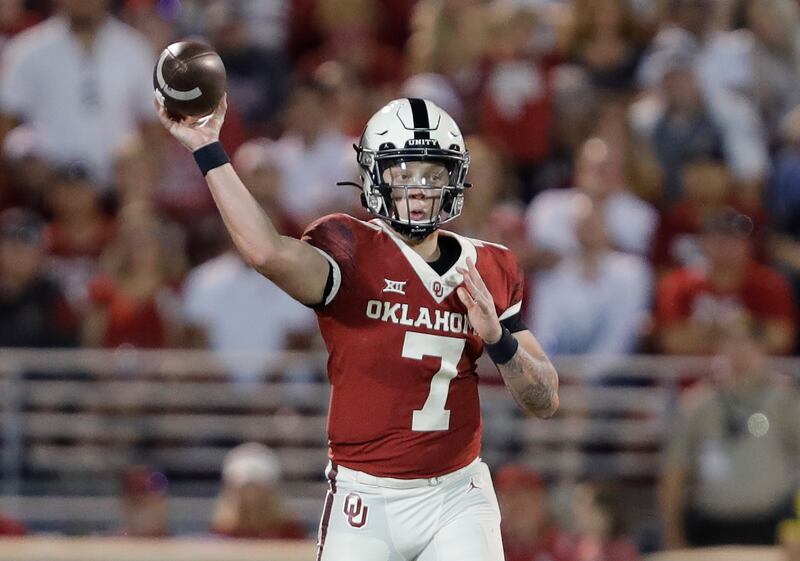
Speaking of the AP poll, it is time for a conversation about potential versus actual on-field performance.
Preseason polls are all about potential (and past performance). That is an accepted part of college football. Once the season starts, though, shouldn’t the polls reflect which teams are playing the best, not which one’s might be the best come season’s end?
Oklahoma throws that idea out the window. Ranked No. 6 in the country, Oklahoma was expected to contend for a national championship. Quarterback Spencer Rattler was the Heisman Trophy frontrunner and 2021 was supposed to be the year that Lincoln Riley officially established himself as one of the best coaches in America.
Through four weeks, though, Oklahoma hasn’t impressed. At all. The Sooners barely beat Tulane, at home no less. Two weeks later, a reeling Nebraska program nearly upset Oklahoma in Norman. On Saturday, West Virginia led the entire game, until Oklahoma scored on the final play to win.
Winning matters, of course, and the Sooners are undefeated. They should be rewarded for that. But why are they ranked ahead of undefeated Cincinnati? Or Arkansas? Or Notre Dame, Ole Miss, BYU or Michigan? There are 11 undefeated teams behind Oklahoma in the AP poll and most have more impressive resumes to this point.
Yes, Oklahoma might be more talented than all of those teams and by the end of the year the Sooners may have put it all together and indeed be a national title contender. Right now, though, they aren’t a contender and their standing should reflect that reality, not their potential.
The best team in the West is Oregon. Who’s No. 2?
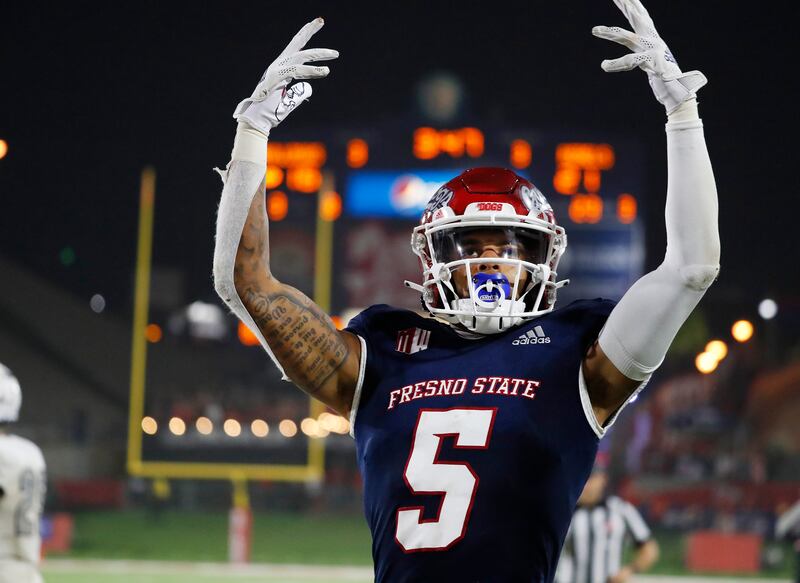
Right now, there is no better team west of the Rockies than Oregon. The Ducks are ranked No. 3 in the country, with wins over Fresno State, Ohio State, Stony Brook and Arizona. Through the first four weeks of the season, Oregon appears to have something special on its hands, arguably the Ducks’ best team since Mariota led Oregon to the national championship game in 2015.
Who is the second-best team, though?
There are plenty of contenders. BYU is undefeated and ranked No. 13. Going solely off the polls, the No. 2 team in the West is the independent Cougars.
There are other teams to watch as the season progresses, though.
Fresno State boasts a win over No. 20 UCLA and is ranked No. 18. The Bulldogs’ only loss to this point was a down-to-the-wire defeat to Oregon in Eugene.
Then there are the Bruins. UCLA soundly defeated LSU and on Saturday took down a rising Stanford team that had already handled USC. At this point the Bruins are the favorite to win the Pac-12 South.
San Diego State deserves mention, too. The Aztecs are undefeated, with wins over Arizona and Utah. Wyoming is also 4-0, though the Cowboys’ schedule has been light compared to the competition, with games against Northern Illinois, Ball State and UConn.
At this point of the season, BYU is the second-best team in the West. The Cougars have the strongest argument.
Watch out for Fresno State and San Diego State, though. The Bulldogs and Aztecs are on a collision course in the Mountain West Conference.


